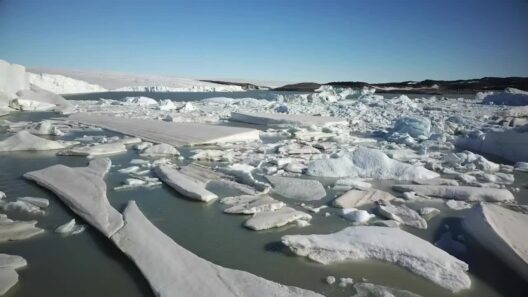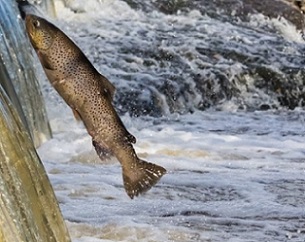The Great Barrier Reef, an emblem of natural splendor and biodiversity, has captivated scientists and vacationers alike for generations. Spanning over 2,300 kilometers along the northeastern coast of Australia, it is the largest coral reef system in the world, teeming with vibrant marine life. However, this breathtaking ecosystem is currently on the brink of collapse, as global warming relentlessly asserts its detrimental influence. The plight of the Great Barrier Reef serves not only as a dire warning of ecological peril but also as a focal point for understanding the broader implications of climate change.
One common observation about the Great Barrier Reef is its staggering beauty, marked by an array of colors and life forms that seem, at first glance, impervious to the ravages of time and environmental upheaval. Yet, beneath this picturesque surface lies a narrative steeped in tragedy. Increasing ocean temperatures, profound acidification, and environmental degradation threaten to obliterate the very essence of what makes the reef a UNESCO World Heritage site.
The coral polyps, which are the architects of this vibrant underwater metropolis, are highly sensitive organisms that thrive within specific temperature ranges. Recent studies reveal that summer temperatures have risen beyond the tolerated limits for many coral species, leading to widespread bleaching events. In these instances, corals expel the symbiotic algae living within their tissues, losing not only their dazzling colors but also their primary energy source. This is not merely a cosmetic issue; it jeopardizes the entire marine ecosystem reliant on corals for habitat and sustenance.
Moreover, the impact of global warming on the Great Barrier Reef extends far beyond thermal stress. Ocean acidification, a direct consequence of elevated carbon dioxide levels, disrupts the delicate balance of marine pH. As CO2 dissolves in seawater, it forms carbonic acid, which diminishes the availability of carbonate ions essential for coral calcification. Consequently, the very structure of the reef is at risk, leading to a cascading effect on marine life. Fish, mollusks, and various other marine organisms face existential threats as their habitats deteriorate and food sources diminish.
Perhaps one of the most alarming consequences of climate change on the Great Barrier Reef is the proliferation of coral diseases. Warmer waters create a conducive environment for pathogens that can devastate coral populations. With corals already weakened by environmental stressors, these diseases can spread rapidly, leaving behind barren underwater landscapes devoid of life. The phenomenon illustrates a grim reality: the interconnectedness of climate change effects, where one event triggers a series of negative outcomes.
Interestingly, the Great Barrier Reef has become a symbol of a broader struggle against climate change, which is often steeped in public consciousness. People are fascinated by this majestic ecosystem and yet are often unaware of the intricate web of factors contributing to its decline. The reef encapsulates a paradox; it is both a destination for tourism and a victim of the very activities that enable this industry. The alarming rate of coral loss is not just a local issue; it reverberates globally, impacting fisheries, tourism economics, and carbon sequestration processes that are vital for regulating Earth’s climate.
This fascination with the Great Barrier Reef and its plight has sparked movements for environmental advocacy, urging individuals and governments alike to take meaningful action against climate change. It beckons a shift in perspective, compelling humanity to recognize that nature is not merely a backdrop for leisure but a critical player in our own survival. Effective activism demands an understanding of complex ecological interactions, an appreciation for biodiversity, and a commitment to sustainable practices.
The Great Barrier Reef’s last stand against global warming underscores the urgency for systemic change. It encourages transformative policies around fossil fuel use, deforestation, and waste management, advocating for renewable energy solutions and a circular economy. Innovations in green technology and conservation strategies can be incorporated to not only mitigate the impacts on the reef but also to restore damaged ecosystems. Successful restoration initiatives require collaboration among scientists, policymakers, and local communities to foster resilient, adaptive strategies that honor the intricate balance of marine life.
Public engagement and education play pivotal roles in the fight to save the Great Barrier Reef. Harnessing the power of social media, documentaries, and community initiatives can amplify the message, inspiring grassroots movements. Informing the younger generation about the significance of the reef encourages them to become stewards of the environment. Their collective involvement galvanizes hope and motivates action, as youth advocacy has historically been a catalyst for transformative change.
In conclusion, the Great Barrier Reef stands as a poignant reminder of the fragility of our planet’s ecosystems in the face of climate change. While its vibrant beauty continues to mesmerize many, there lies an urgent call to action beneath those stunning waves. Addressing the underlying causes of its decline offers insights not only into ecological preservation but also into the resilience of humanity in confronting one of the most formidable challenges of our era. The fight to save the Great Barrier Reef encapsulates a larger narrative about our environmental legacy, emphasizing the imperative to protect our planet for future generations.






